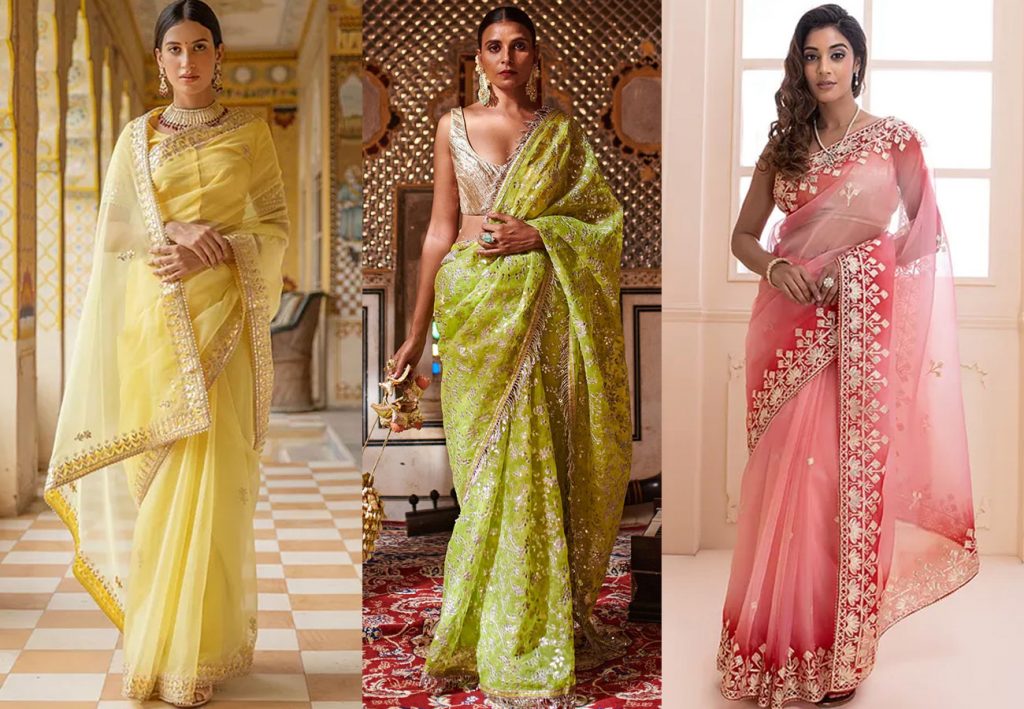The saree, a traditional Indian garment, is a long, unstitched cloth draped around the body in various styles.
The Evolution of the Sari
The earliest evidence of saris can be traced back to ancient sculptures and paintings. Initially, saris were simple, unstitched lengths of cloth.
The Significance of the Sari
The sari holds immense cultural and historical significance in India.
The Different Types of Saris
There are numerous types of saris, each with its own unique features.
- Banarasi Silk Sari: Known for its intricate gold and silver zari work, Banarasi silk saris are considered the epitome of luxury.
- Kanjeevaram Silk Sari: Originating from Kanchipuram in Tamil Nadu, Kanjeevaram silk saris are renowned for their rich colors and fine weaving.
- Patola Silk Sari: Handwoven in Patan, Gujarat, Patola silk saris are famous for their intricate double ikat weaving technique.
- Chanderi Silk Sari: Lightweight and sheer, Chanderi silk saris are known for their delicate zari work and beautiful floral motifs.
The Sari in Modern Times
In recent years, the sari has undergone a resurgence in popularity, with designers reinterpreting traditional styles to create contemporary looks.
The Sari: A Glimpse into India's Rich Cultural Heritage
The sari, a traditional Indian garment, is a testament to the country's rich cultural heritage. It is a versatile garment that can be draped in various styles, each conveying a different mood and personality.
The Art of Draping a Sari
Draping a sari is an art form that requires skill and practice. There are numerous draping styles, each specific to a region or occasion. Some of the most popular draping styles include:
- Nivi Style: This is the most common draping style, popular in South India.
- Bengali Style: This style is characterized by its flowing pleats and elegant drape.
- Maharashtrian Style: This style is known for its simplicity and comfort.
- Gujarati Style: This style is characterized by its unique pleating and draping techniques.
The Sari as a Symbol of Empowerment
In recent years, the sari has become a symbol of women's empowerment in India. Many women, including politicians, activists, and celebrities, have chosen to wear saris on important occasions, showcasing their pride in their cultural heritage.
The Sari's Enduring Appeal
The sari continues to captivate people around the world with its beauty, elegance, and versatility. It is a timeless garment that has stood the test of time, adapting to changing trends while retaining its core essence. The sari is not just a piece of clothing but a cultural icon that represents the spirit of India.

Comments
Post a Comment